CAD/CAM Resin-Based Composites for Use in Long-Term Temporary Fixed Dental Prostheses
Abstract
:1. Introduction
2. Materials, Experimental Procedure and Methods
2.1. Materials
2.2. Experimental Procedure
2.3. Methods
3. Results
3.1. Fracture Loads and Failure Rates
3.2. Further Studies to Clarify the Mechanism of Action
3.2.1. Surface Wear
3.2.2. Surface Analyses
3.2.3. Microstructure
4. Discussion
4.1. Mechanical Behavior
4.2. Surface Properties
4.3. Microstructure
5. Conclusions
Author Contributions
Funding
Institutional Review Board Statement
Informed Consent Statement
Data Availability Statement
Acknowledgments
Conflicts of Interest
References
- Burns, D.R.; Beck, D.A.; Nelson, S.K. A review of selected dental literature on contemporary provisional fixed prosthodontic treatment: Report of the Committee on Research in Fixed Prosthodontics of the Academy of Fixed Prosthodontics. J. Prosthet. Dent. 2003, 90, 474–497. [Google Scholar] [CrossRef]
- Ireland, M.F.; Dixon, D.L.; Breeding, L.C.; Ramp, M.H. In vitro mechanical property comparison of four resins used for fabrication of provisional fixed restorations. J. Prosthet. Dent. 1998, 80, 158–162. [Google Scholar] [CrossRef]
- Kaiser, D.A.; Cavazos, E. Temporization techniques in fixed prosthodontics. Dent. Clin. N. Am. 1985, 29, 403–412. [Google Scholar] [PubMed]
- Lang, R.; Rosentritt, M.; Leibrock, A.; Behr, M.; Handel, G. Colour stability of provisional crown and bridge restoration materials. Br. Dent. J. 1998, 185, 468–471. [Google Scholar] [CrossRef] [PubMed]
- Edelhoff, D.; Beuer, F.; Schweiger, J.; Brix, O.; Stimmelmayr, M.; Guth, J.-F. CAD/CAM-generated high-density polymer restorations for the pretreatment of complex cases: A case report. Quintessence Int. 2012, 43, 457–467. [Google Scholar] [PubMed]
- Pietrobon, N.; Lehner, C.R.; Schärer, P. Langzeitprovisorien in der Kronen-Brücken-Prothetik. Konstruktionsprinzipien, Materialwahl, und praktisches Vorgehen. [Long-term temporary dentures in crown and bridge prosthesis. The design principles, choice of material and practical procedure]. Schweiz. Mon. Zahnmed. 1996, 106, 236–247. [Google Scholar]
- McLean, J.W. The failed restoration: Causes of failure and how to prevent them. Int. Dent. J. 1990, 40, 354–358. [Google Scholar]
- Lang, R.; Rosentritt, M.; Handel, G. Bruchfestigkeit von dreigliedrigen Brückenprovisorien-eine In-vitro-Studie. DZZ 2005, 12, 665–668. Available online: https://www.online-dzz.de/archiv/ausgabe/artikel/dzz-12-2005/2788-bruchfestigkeit-von-dreigliedrigen-brueckenprovisorien-eine-in-vitro-studie/ (accessed on 19 August 2021).
- Alt, V.; Hannig, M.; Wöstmann, B.; Balkenhol, M. Fracture strength of temporary fixed partial dentures: CAD/CAM versus directly fabricated restorations. Dent. Mater. 2011, 27, 339–347. [Google Scholar] [CrossRef]
- Balkenhol, M.; Mautner, M.C.; Ferger, P.; Wöstmann, B. Mechanical properties of provisional crown and bridge materials: Chemical-curing versus dual-curing systems. J. Dent. 2008, 36, 15–20. [Google Scholar] [CrossRef]
- Mainjot, A.K.; Dupont, N.M.; Oudkerk, J.C.; Dewael, T.Y.; Sadoun, M.J. From Artisanal to CAD-CAM Blocks: State of the Art of Indirect Composites. J. Dent. Res. 2016, 95, 487–495. [Google Scholar] [CrossRef]
- Magne, P.; Knezevic, A. Influence of overlay restorative materials and load cusps on the fatigue resistance of endodontically treated molars. Quintessence Int. 2009, 40, 729–737. [Google Scholar]
- Ionescu, A.C.; Hahnel, S.; König, A.; Brambilla, E. Resin composite blocks for dental CAD/CAM applications reduce biofilm formation in vitro. Dent. Mater. 2020, 36, 603–616. [Google Scholar] [CrossRef]
- Rosentritt, M.; Kieschnick, A.; Stawarczyk, B. Werkstoffkunde-Kompendium “Polymerbasierte CAD/CAM Werkstoffe”: Moderne Dentale Materialen im Praktischen Arbeitsalltag. 2018. Available online: https://werkstoffkunde-kompendium.de/das-werkstoffkunde-kompendium/polymerbasierte-cadcam-werkstoffe/ (accessed on 3 October 2021).
- Alamoush, R.A.; Silikas, N.; Salim, N.A.; Al-Nasrawi, S.; Satterthwaite, J.D. Effect of the Composition of CAD/CAM Composite Blocks on Mechanical Properties. Biomed. Res. Int. 2018, 2018, 4893143. [Google Scholar] [CrossRef]
- Martin, R.; Nicoleta, I.; Ulrich, L. (Eds.) Moderne Materialien und Technologien: 442 Abbildungen. In Werkstoffkunde in der Zahnmedizin; Thieme (Verlag): New York, NY, USA, 2018; p. 214. [Google Scholar]
- Rauch, A.; König, A. Indirekte Komposite aus klinischer und werkstoffkundlicher Sicht. Quintessenz Zahnmed. 2020, 71, 116–126. [Google Scholar]
- Zhi, L.; Bortolotto, T.; Krejci, I. Comparative in vitro wear resistance of CAD/CAM composite resin and ceramic materials. J. Prosthet. Dent. 2016, 115, 199–202. [Google Scholar] [CrossRef] [PubMed]
- Stawarczyk, B.; Liebermann, A.; Eichberger, M.; Güth, J.-F. Evaluation of mechanical and optical behavior of current esthetic dental restorative CAD/CAM composites. J. Mech. Behav. Biomed. Mater. 2015, 55, 1–11. [Google Scholar] [CrossRef] [PubMed]
- Zimmermann, M.; Ender, A.; Attin, T.; Mehl, A. Fracture load of three-unit full-contour fixed dental prostheses fabricated with subtractive and additive CAD/CAM technology. Clin. Oral Investig. 2020, 24, 1035–1042. [Google Scholar] [CrossRef] [PubMed]
- Coldea, A.; Swain, M.V.; Thiel, N. In-vitro strength degradation of dental ceramics and novel PICN material by sharp indentation. J. Mech. Behav. Biomed. Mater. 2013, 26, 34–42. [Google Scholar] [CrossRef] [PubMed]
- Mörmann, W.H.; Stawarczyk, B.; Ender, A.; Sener, B.; Attin, T.; Mehl, A. Wear characteristics of current aesthetic dental restorative CAD/CAM materials: Two-body wear, gloss retention, roughness and Martens hardness. J. Mech. Behav. Biomed. Mater. 2013, 20, 113–125. [Google Scholar] [CrossRef] [PubMed] [Green Version]
- Stawarczyk, B.; Sener, B.; Trottmann, A.; Roos, M.; Ozcan, M.; Hämmerle, C.H.F. Discoloration of manually fabricated resins and industrially fabricated CAD/CAM blocks versus glass-ceramic: Effect of storage media, duration, and subsequent polishing. Dent. Mater. J. 2012, 31, 377–383. [Google Scholar] [CrossRef] [Green Version]
- Della Bona, A.; Anusavice, K.J.; Mecholsky, J.J., Jr. Failure analysis of resin composite bonded to ceramic. Dent. Mater. 2003, 19, 693–699. [Google Scholar] [CrossRef]
- Ertaş, E.; Güler, A.U.; Yücel, A.C.; Köprülü, H.; Güler, E. Color stability of resin composites after immersion in different drinks. Dent. Mater. J. 2006, 25, 371–376. [Google Scholar] [CrossRef] [Green Version]
- Augusto, M.G.; Andrade, G.S.; Caneppele, T.M.F.; Borges, A.B.; Torres, C.R.G. Nanofilled bis-acryl composite resin materials: Is it necessary to polish? J. Prosthet. Dent. 2020, 124, e1–e494. [Google Scholar] [CrossRef]
- Mangal, M. Polish Retention and Related Material Parameters of Provisional Crown and Bridge Materials. Ph.D. Dissertation, Erlangen-Nürnberg: Friedrich-Alexander-Universität (FAU), Erlangen, Germany, 2014. [Google Scholar]
- Sulaiman, T. Mechanical and Optical Properties of a Novel Bisacryl ‘Semi-Permanent’ Restorative Material. Available online: https://dmg-connect.com/wp-content/uploads/2020/10/UNC_LuxaCrown-Final-Report.pdf/ (accessed on 10 July 2021).
- Ayşe, A.; Elçin, S. Effects of Different Storage Conditions on Mechanical Properties of CAD/CAM Restorative Materials. Odovtos Int. J. Dent. Sci. 2020, 22, 18. [Google Scholar]
- Başak, S.S.; Özmen, M.F.; Sağsöz, Ö.; Bayindir, F. Effect of thermo-cycling on microhardness of CAD-CAM provisional materials. Int. J. Appl. Dent. Sci. 2020, 6, 254–257. [Google Scholar] [CrossRef]
- Niem, T.; Youssef, N.; Wöstmann, B. Influence of accelerated ageing on the physical properties of CAD/CAM restorative materials. Clin. Oral Investig. 2020, 24, 2415–2425. [Google Scholar] [CrossRef]
- Theelke, B.; Schechner, G. Monolithische Restauration aus Zirkoniumoxid: Klinisch Sicher. 2020. Available online: https://www.dentalmagazin.de/praxiszahnmedizin/prothetik/zirkoniumoxid-klinisch-sicher/ (accessed on 27 June 2021).
- Abdulmohsen, B.; Parker, S.; Braden, M.; Patel, M.P. A study to investigate and compare the physicomechanical properties of experimental and commercial temporary crown and bridge materials. Dent. Mater. 2016, 32, 200–210. [Google Scholar] [CrossRef] [PubMed]
- Koenig, A. Analysis of air voids in cementitious materials using micro X-ray computed tomography (XCT). Constr. Build. Mater. 2020, 244, 118313. [Google Scholar] [CrossRef]
- Hancock, B.C.; Zografi, G. The relationship between the glass transition temperature and the water content of amorphous pharmaceutical solids. Pharm. Res. 1994, 11, 471–477. [Google Scholar] [CrossRef] [PubMed]
- Waltimo, A.; Könönen, M. A novel bite force recorder and maximal isometric bite force values for healthy young adults. Scand. J. Dent. Res. 1993, 101, 171–175. [Google Scholar] [CrossRef] [PubMed]
- Koenig, A.; Schmidtke, J.; Schmohl, L.; Schneider-Feyrer, S.; Rosentritt, M.; Hoelzig, H.; Kloess, G.; Vejjasilpa, K.; Schulz-Siegmund, M.; Fuchs, F.; et al. Characterisation of the Filler Fraction in CAD/CAM Resin-Based Composites. Materials 2021, 14, 1986. [Google Scholar] [CrossRef] [PubMed]
- Hedayat, A.; Nagy, N.; Packota, G.; Monteith, J.; Allen, D.; Wysokinski, T.; Zhu, N. Synchrotron-radiation-based X-ray micro-computed tomography reveals dental bur debris under dental composite restorations. J. Synchrotron Radiat. 2016, 23, 777–782. [Google Scholar] [CrossRef] [PubMed]
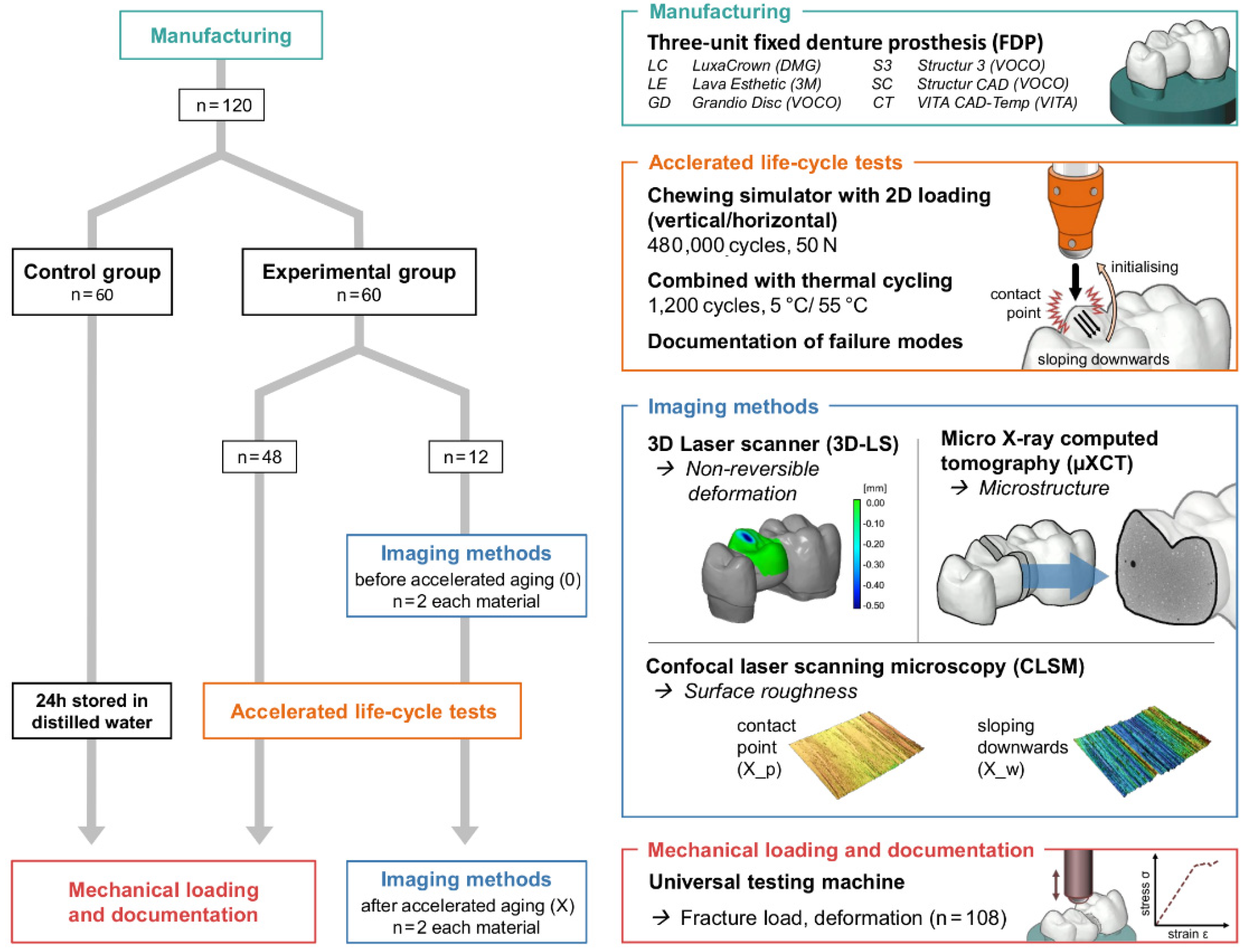
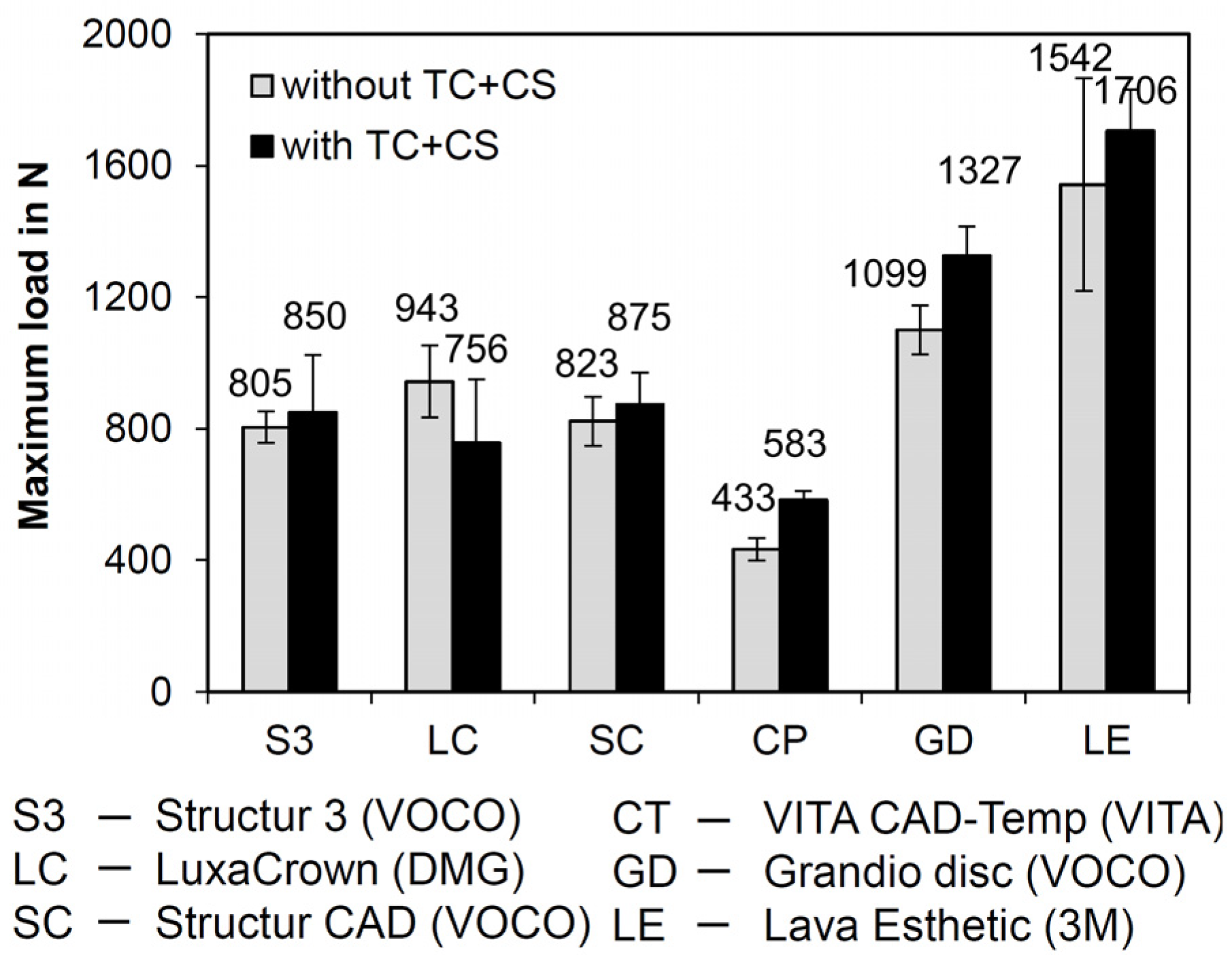
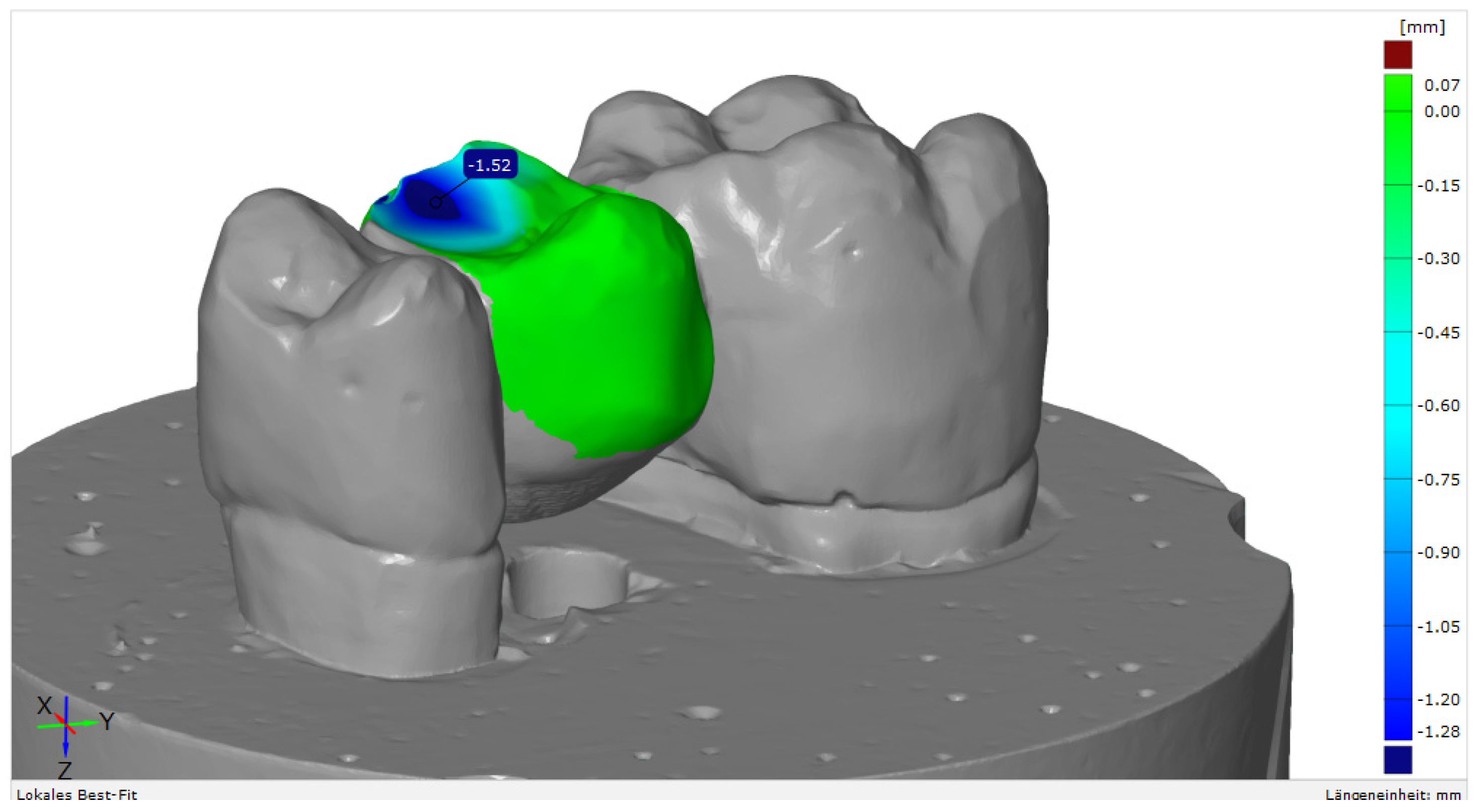

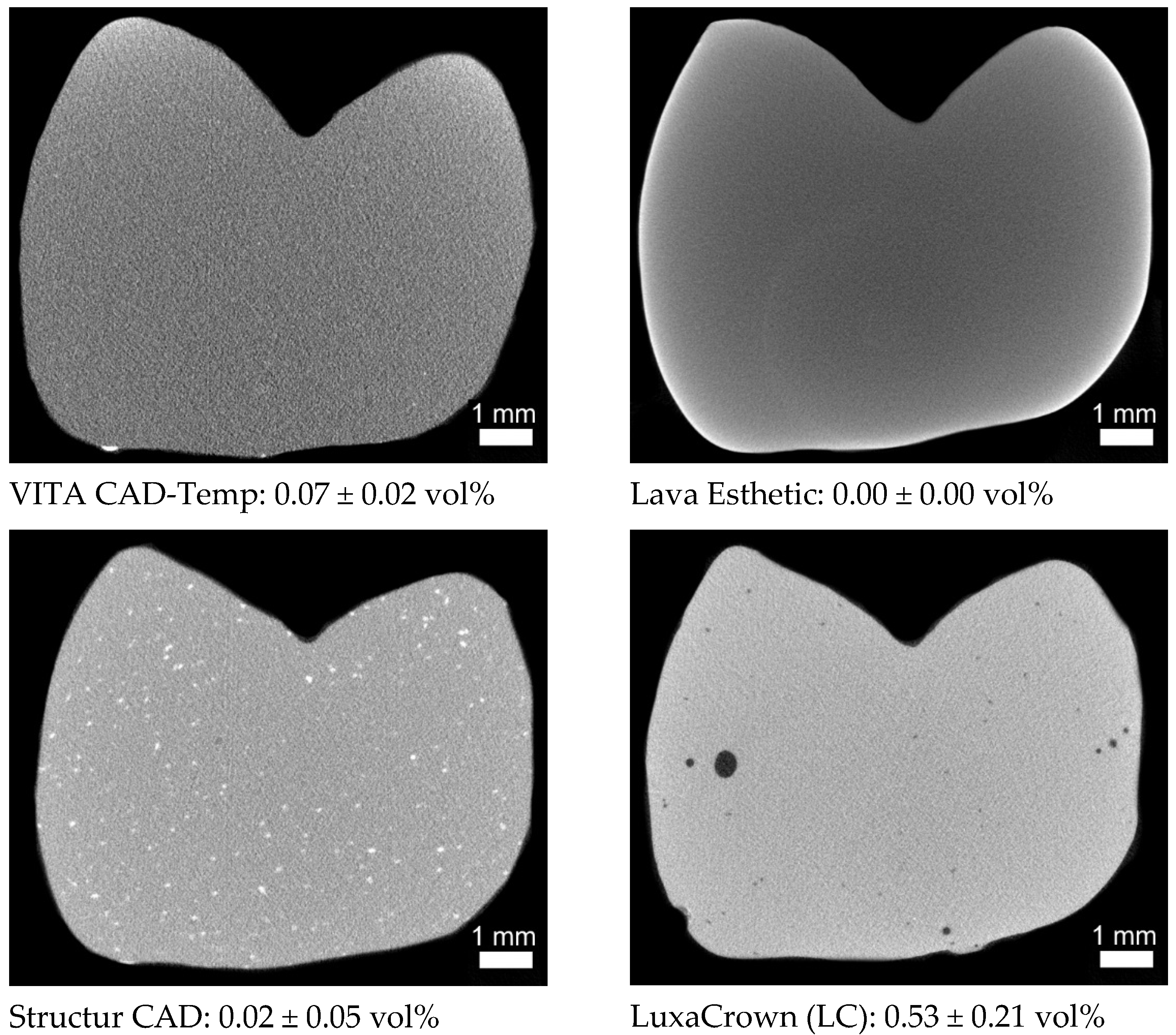
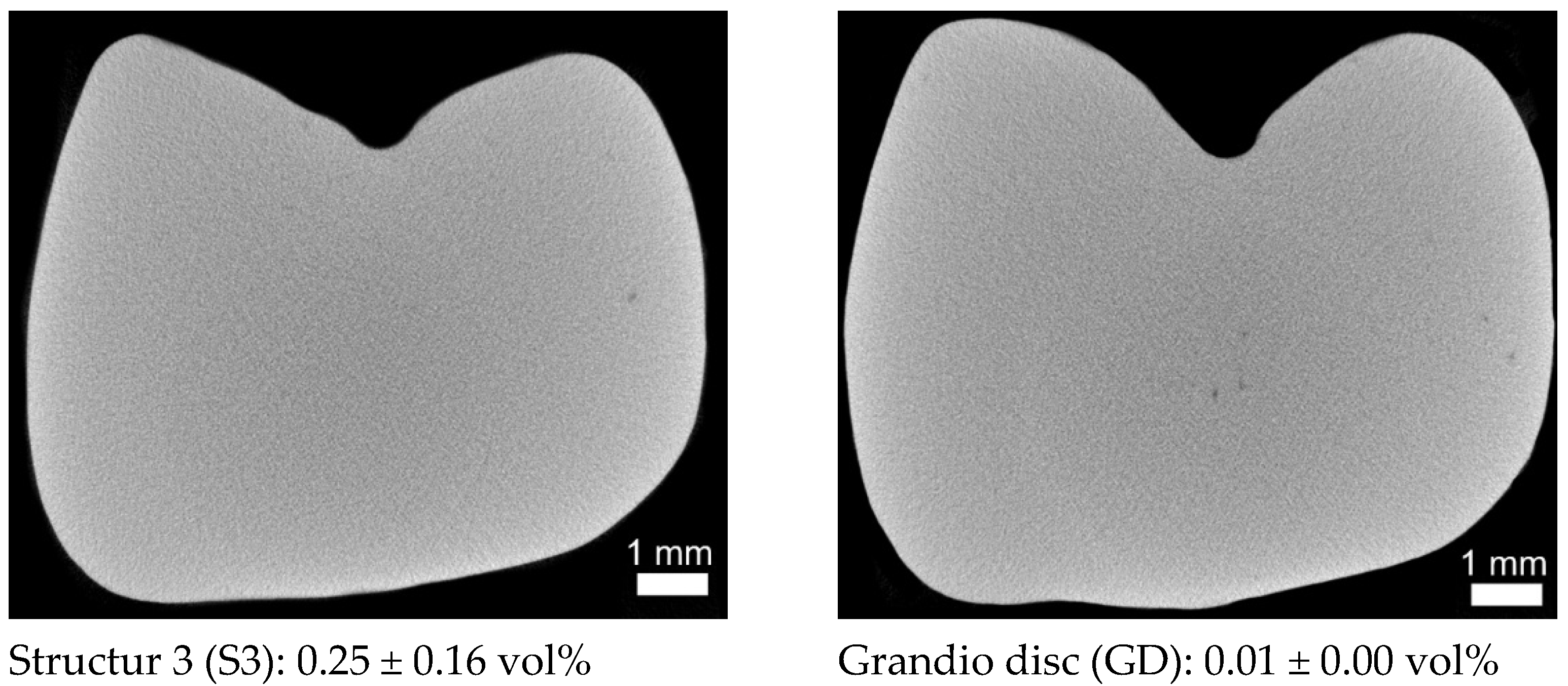
| Products (Code) | Composition | Micro- Hardness Vickers | Elastic Modulus GPa | Flexural Strength MPa | |
|---|---|---|---|---|---|
| Bis-acryl composite resins | Structur 3 (S3) | UDMA, Bis-GMA, Filler: Fumed silica (50 nm) [26], 32 wt% [27] | 13 [27] | 1.9 | 113 * (3-point) 142 * (biaxial) |
| LuxaCrown (LC) | Dimethacrylate Resin 35–45 wt%, filler content 46 wt% (with Ø 0.02–1.5 µm) * | / | / | 154 * 110 [28] | |
| Resin composites (CAD/CAM discs) | Structur CAD (SC) | / | / | / | >120 * |
| VITA CAD-Temp (CT) | PMMA, 14 wt% microfillers (SiO2) [29] | 25 [29] 25 [30] | 3.62.8 [31] | 88.5 [31] (3-point) | |
| Grandio disc (GD) | Dimethacrylates, 86 wt% glass ceramic filler; functionalized | 155 * | 18 * | 333 * | |
| Zirconia | Lava Esthetic (LE) | 5 mol% Yttria-stabilized Cubic Zirconia Polycrystal [32] | 1200 * | 216 * | 800 (3-point) * |
| Enamel | / | / | 313.3 [15] | 59.7 [15] | / |
| Dentin | / | / | 62.3 [15] | 16.5 [15] | / |
| Processing Method | Indication | Material | Code | Manufacturer | LOT |
|---|---|---|---|---|---|
| Direct processing material | Temporary materials | LuxaCrown | LC | DMG GmbH, Hamburg, Germany | 791629 |
| Structur 3 | S3 | VOCO GmbH, Cuxhaven, Germany | 1919450 | ||
| Indirect processing material | Temporary materials | Structur CAD | SC | VOCO GmbH, Cuxhaven, Germany | V77579 |
| VITA CAD-Temp | CT | VITA Zahnfabrik H. Rauter GmbH & Co. KG, Bad Säckingen, Germany | 78210 | ||
| Permanent materials | Lava Esthetic | LE | 3M Deutschland GmbH, Seefeld, Germany | 5364987 | |
| Grandio disc | GD | VOCO GmbH, Cuxhaven, Germany | 2006665 |
| Tooth Stumps | Models | Three-Unit FDP | Test Specimen |
|---|---|---|---|
 |  |  |  |
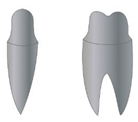 | 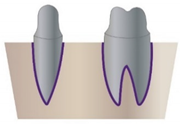 |  | 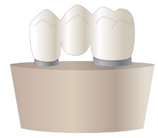 |
| FDPs | Fracture Load | p Value |
| S3_0 | 804.7 (95.3) | 0.810 |
| S3_X | 850.4 (344.9) | |
| LC_0 | 943.3 (217.2) | 0.216 |
| LC_X | 756.1 (392.4) | |
| SC_0 A | 823.0 (148.4) | 0.523 |
| SC_X B | 875.0 (190.3) | |
| CT_0 A | 433.5 (67.6) | <0.001 |
| CT_X B | 582.8 (57.1) | |
| GD_0 | 1099.4 (149.6) | 0.021 |
| GD_X B | 1326.8 (176.8) | |
| LE_0 | 1541.9 (645.8) | 0.509 |
| LE_X B | 1705.8 (248.1) |
| Directly Processed | Indirectly Processed/ | Indirectly Processed/ | ||||
|---|---|---|---|---|---|---|
| Temporary | Temporary | Permanent | ||||
| FDPs | S3 | LC | SC | CT | GD | LE |
| 1 | 1.52 | 0.42 | 0.81 | 0.87 | 0.85 | 0.05 |
| 2 | - 1 | 0.56 | 0.55 | 0.81 | 0.78 | 0.07 |
| FDPs | Ra (SD) | Rz (SD) | Sign. Diff. (p < 0.05) |
|---|---|---|---|
| S3_0 | 0.665 (0.098) | 4.226 (0.645) | A, B, 1, 2 |
| S3_X_p | 1.070 (0.258)) | 6.559 (1.071) | |
| S3_X_w | 1.947 (1.073) | 10.752 (4.945) | |
| LC_0 | 0.855 (0.080) | 5.678 (0.717) | B, C, 2, 3 |
| LC_X_p | 0.858 (0.290) | 5.696 (1.472) | |
| LC_X_w | 1.472 (0.593) | 10.194 (3.843) | |
| SC_0 | 0.637 (0.066) | 4.254 (0.873) | A, B, C, 2, 3 |
| SC_X_p | 0.985 (0.330) | 5.585 (0.706) | |
| SC_X_w | 1.695 (0.742) | 9.439 (3.407) | |
| CT_0 | 0.541 (0.102) | 3.558 (0.976) | A, B, C, 1, 2, 3 |
| CT_X_p | 2.870 (2.101) | 19.138 (6.038) | |
| CT_X_w | 3.531 (0.755) | 24.957 (5.037) | |
| GD_0 | 0.803 (0.012) | 5.769 (0.291) | A, B, 1, 2 |
| GD_X_p | 1.398 (0.272) | 10.239 (1.318) | |
| GD_X_w | 1.864 (0.857) | 11.839 (3.938) | |
| LE_0 | 0.791 (0.038) | 6.557 (1.853) | A, B, 1, 2, 3 |
| LE_X_p | 0.548 (0.033) | 3.517 (0.166) | |
| LE_X_w | 0.749 (0.113) | 4.924 (1.358) |
Publisher’s Note: MDPI stays neutral with regard to jurisdictional claims in published maps and institutional affiliations. |
© 2021 by the authors. Licensee MDPI, Basel, Switzerland. This article is an open access article distributed under the terms and conditions of the Creative Commons Attribution (CC BY) license (https://creativecommons.org/licenses/by/4.0/).
Share and Cite
Hensel, F.; Koenig, A.; Doerfler, H.-M.; Fuchs, F.; Rosentritt, M.; Hahnel, S. CAD/CAM Resin-Based Composites for Use in Long-Term Temporary Fixed Dental Prostheses. Polymers 2021, 13, 3469. https://doi.org/10.3390/polym13203469
Hensel F, Koenig A, Doerfler H-M, Fuchs F, Rosentritt M, Hahnel S. CAD/CAM Resin-Based Composites for Use in Long-Term Temporary Fixed Dental Prostheses. Polymers. 2021; 13(20):3469. https://doi.org/10.3390/polym13203469
Chicago/Turabian StyleHensel, Franziska, Andreas Koenig, Hans-Martin Doerfler, Florian Fuchs, Martin Rosentritt, and Sebastian Hahnel. 2021. "CAD/CAM Resin-Based Composites for Use in Long-Term Temporary Fixed Dental Prostheses" Polymers 13, no. 20: 3469. https://doi.org/10.3390/polym13203469
APA StyleHensel, F., Koenig, A., Doerfler, H.-M., Fuchs, F., Rosentritt, M., & Hahnel, S. (2021). CAD/CAM Resin-Based Composites for Use in Long-Term Temporary Fixed Dental Prostheses. Polymers, 13(20), 3469. https://doi.org/10.3390/polym13203469







